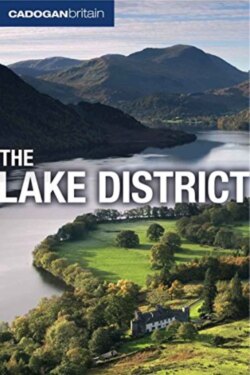Читать книгу Britain: The Lake District - Vivienne Crow - Страница 37
На сайте Литреса книга снята с продажи.
Wildlife and Habitats
ОглавлениеHad man not cleared the forests for wood, and to make way for livestock, the Lake District mountains would today be mantled in a thick cloak of oak, birch and pine above which only the highest peaks would be visible. The valley bottoms would be impenetrable swamps dotted with alder and dense sedges. Instead, we have exposed rock slopes and expansive moor and pasture, all partitioned by drystone walls.
Patches of sessile oak remain on dry ground, while the damp still has some stands of birch and alder. There are also holly, cherry, crab apple, rowan, witch hazel, yew and occasional remnants of the huge juniper forests that once existed. Many of these produce gorgeous blossoms in the spring. There have been attempts in recent years to rid the landscape of some of the grimly regimented conifer plantations that were planted in the last century when reverence for the picturesque yielded to more pressing economic imperatives. In Ennerdale, for instance, a partnership of the National Trust, Forestry Commission and United Utilities is felling many of the sitka spruce trees planted in the 1920s in the hope that native broad-leaf trees will return (see here)
The fell-tops may seem to be covered in nothing more than heathers, bilberry, lichen and mosses, but there are wildflowers too – one can see wood anemone, asphodels, red campion, lady’s mantle, bog myrtle, spotted orchids, stonecrop, saw-worth and thrift – and, of course, the odd daffodil. The bright blue Alpine gentian, one of Britain’s rarest flowers, can be found only in Cumbria and parts of Perth and Kinross. Other examples of arctic-alpine flora such as roseroot, mountain sorrel and the dainty purple saxifrage still bloom, among other places, on the eastern slopes of Helvellyn.
The limestone grasslands, in particular, are a delight for amateur botanists. Hoary rockrose, wood sorrel and many rare orchids can be found on the limestone pavement. In the early summer, these areas are full of colour – not only thanks to the vast array of flora but also because of the butterflies that breed here: brimstones, dark green fritillaries, graylings and common blues as well as some of Britain’s rarest species, including the high brown and pearl-bordered fritillaries.
Despite centuries of human interference, the Lake District remains relatively rich in birdlife. The fell-tops are home all year round to ravens, buzzards, peregrines and, in the eastern fells, England’s last surviving golden eagle (see here). Spring migrants include the wheatear and ring ouzel (mountain blackbird). Lower down, in the spring, you’ll encounter a range of migratory species, including redstart, pied flycatcher, wood warbler and tree pipit among the year-round residents such as chaffinch, green and great-spotted woodpeckers, nuthatch and sparrowhawk. On the lakes themselves, you can find good numbers of waterfowl, goosander, goldeneye and tufted duck, while rivers and streams are home to dippers, grey wagtails and common sandpipers. A pair of ospreys recently made the Lake District their summer home, returning from wintering in Africa to their nest in Dodd Wood on the shores of Bassenthwaite Lake every April (see here).
The Pennine moors of eastern Cumbria are home to a lot of species that have abandoned the Lake District over the years. These include curlew, red grouse, lapwing, visiting dotterel, the elusive but magnificent black grouse (see here) and the even rarer hen harrier, still one of the most persecuted birds in Britain.
Mammals of the high fells include foxes, hares and stoats. Herds of red deer can also be seen above the tree line, especially in the Martindale area of the eastern Lake District (see here). The autumn rut is one of the most exciting wildlife events in the fells. Its start is signalled by the deep roaring of the huge stags, which means they have abandoned the single-sex herds in which they congregate for much of the year and are now gathering their individual harems for the mating season. The deep bellow of the stag performs two functions. Firstly, females are attracted to the loudest, most frequent roar. Secondly, it forms part of the posturing used by a male to achieve dominance over other stags. Another element of this is the antler fight, during which the animals lock antlers and attempt to push each other away. The strongest secures a harem for mating. Some stags could have as many as 40 hinds in their harem.
Cumbria’s woods are home to badgers, roe deer, voles, shrews, the occasional otter and, of course, red squirrels (see here). There have even been some unconfirmed sightings of pine marten in Grizedale and Ennerdale in recent years.
There are some interesting inhabitants to be found in Cumbria’s lakes and becks too. The Lake District is the southern limit of the Arctic char, a slender fish that has been here since the last ice sheets disappeared; vendace, found in Bassenthwaite Lake and Derwent Water, is one of only three freshwater white fish native to Britain; and the native white-clawed crayfish, threatened with extinction, is found only in the rivers Kent and Eden.
Often overlooked by tourists, Cumbria also has a long and varied coastline. St Bees Head, with its large colonies of sea birds, is the only significant area of cliff (see here), but there is plenty of life to be found in the dunes, mud flats, salt marshes and other fragile habitats that can be found from Morecambe Bay in the south right up to the Scottish border in the north. The Solway Coast Area of Outstanding Natural Beauty (see here) is particularly fascinating – with wildflowers such as wild thyme, lady’s bedstraw, restharrow, bird’s-foot trefoil and harebell. You may also see curlews, oystercatchers, little terns, bartailed godwits and little plovers, some of which nest in the strandline vegetation, and, if you are extremely lucky, the natterjack toad, one of Britain’s rarest amphibians.
